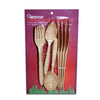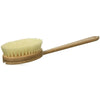Rethinking Hypertension: Dr. Markum's Guidelines, Medication Risks, and Natural Alternatives

High blood pressure, or hypertension, is a significant health concern affecting millions worldwide. Recent shifts in medical guidelines and an aging population have brought new challenges in diagnosis and treatment. This article explores the implications of the 130/80 mm Hg guideline, the risks of overmedication in seniors, natural solutions for blood pressure management, and tips for accurate home monitoring.
The 130/80 mm Hg Guideline? Reclassifying Healthy Individuals
In 2017, the American College of Cardiology (ACC) and American Heart Association (AHA) introduced a significant change in the guidelines for diagnosing hypertension. According to the updated guidelines, a blood pressure reading of 130/80 mm Hg or higher is now considered hypertensive, rather than the previous threshold of 140/90 mm Hg. This new definition reclassified millions of Americans from normal to hypertensive, sparking debate among health professionals. While the intention behind this shift was to identify individuals at risk of cardiovascular disease earlier and encourage preventive measures, some experts argue that it may lead to overdiagnosis and overtreatment, potentially mislabeling healthy individuals as hypertensive.
The impact of this change is more significant than many realize. By lowering the threshold for hypertension, the guidelines may result in more people being prescribed medications to manage blood pressure, even though their levels fall within a range that might not traditionally warrant treatment. This raises concerns about unnecessary prescriptions and the potential side effects of long-term medication use. Furthermore, these guidelines might put unnecessary pressure on individuals to manage their blood pressure through medication, even if lifestyle changes could be sufficient. Critics argue that the risk of overdiagnosis and overtreatment outweighs the benefits, especially when a person's blood pressure fluctuates and may not reflect their true health status.
Misleading Blood Pressure Readings: The Role of Healthcare Providers
Another factor contributing to inaccurate blood pressure readings is the way measurements are taken by healthcare professionals, particularly in fast-paced clinical settings. When a nurse or technician administers a blood pressure check too quickly or improperly, it can lead to an inflated reading. Common mistakes such as taking a reading while the patient is still wearing long sleeves, engaging in conversation during the measurement, or improperly positioning the cuff (not at heart level) all contribute to inaccurately high blood pressure readings.
These errors may be unintentional, but they can have a lasting impact on the patient’s diagnosis. For instance, if a technician takes a reading while the patient is talking, nervous, or has not had enough time to rest, the reading will likely be elevated. The cuff also needs to be positioned correctly at the heart level to ensure an accurate reading, but if it’s placed too high or low on the arm, it can distort the result. This is crucial, as even minor discrepancies can lead to a falsely high reading that may be recorded as hypertensive.
The consequences of such errors are far-reaching. If a doctor does not later recheck the reading properly, they may rely on the initial, incorrect measurement when making decisions about treatment. For example, a reading of 140/85 mm Hg, recorded when the patient is anxious, talking, or has been improperly positioned, might be taken as a definitive diagnosis of hypertension. However, the patient’s actual blood pressure, if measured correctly and under the right conditions, may have been much lower, such as 125/75 or 125/80 mm Hg. These discrepancies could lead to unnecessary medication being prescribed, setting the patient on a path to long-term use of blood pressure medications that they might not need. This is what could be described as “Strike One” in the journey toward an incorrect diagnosis of hypertension and unnecessary medication use.
The Path to Overdiagnosis and Medication: A Cautionary Tale
The problem with this system is that once an incorrect blood pressure reading is recorded and relied upon, it may trigger further tests and treatment recommendations based on a potentially faulty foundation. If the doctor doesn’t take the time to verify the reading or inquire about the circumstances under which it was taken, they may assume the patient’s blood pressure is chronically high, leading them to recommend medications. The rapid administration of the test, coupled with the lack of proper training or care in taking the measurement, unknowingly aids “Big Pharma’s” cause by facilitating the overprescription of medications, even for individuals who do not actually need them. This overmedication, particularly in seniors, carries its own risks, including adverse drug interactions, falls, cognitive decline, and a decreased quality of life.
In essence, what begins as a seemingly harmless oversight—an improperly taken blood pressure reading—can snowball into a chain of events that leads to unnecessary treatment and a potentially inaccurate diagnosis of hypertension. Patients who might have been perfectly healthy in terms of blood pressure could be wrongly classified as hypertensive based on one faulty reading. This issue underscores the importance of accuracy and care when taking blood pressure measurements and highlights the dangers of overdiagnosis in the modern healthcare system.
The Dangers of Overmedication, Especially for Seniors
Overmedication, or polypharmacy, is a growing concern among older adults, who often take multiple medications for various chronic conditions. Studies have shown that polypharmacy can lead to adverse drug interactions, increased risk of falls, cognitive decline, and misdiagnosis . In some cases, seniors may continue taking blood pressure medications even when their readings are within normal ranges, increasing the risk of side effects without corresponding benefits .
Proven Biblical and Natural Solutions: Diet, Exercise, Stress Relief, and Sleep
According to Dr. Markum, adopting a holistic approach to health can be effective in managing blood pressure. Biblical principles often emphasize moderation, self-care, and trust in divine healing. Incorporating these values, along with evidence-based natural strategies, can support heart health:
-
Diet: Consuming a balanced diet rich in fruits, vegetables, whole grains, and lean proteins can help maintain healthy blood pressure levels.
-
Exercise: Regular physical activity strengthens the heart and improves circulation, contributing to lower blood pressure.
-
Stress Relief: Practices such as meditation, prayer, and mindfulness can reduce stress hormones that elevate blood pressure.
-
Sleep: Adequate sleep is crucial for overall health and can help regulate blood pressure.
These lifestyle changes align with both biblical teachings and modern health recommendations, offering a comprehensive approach to managing blood pressure naturally.
Watch Dr. Markum here:
Tips for Accurate Blood Pressure Monitoring at Home
Accurate home blood pressure monitoring is essential to avoid misdiagnosis and unnecessary treatment. Consider the following tips:
-
Proper Equipment: Use a validated, cuff-style monitor.
-
Correct Positioning: Sit with your back supported, feet flat on the floor, and arm at heart level.
-
Multiple Readings: Take two or three readings one minute apart and average them.
-
Consistent Timing: Measure at the same time each day, preferably in the morning before taking medications.
-
Avoid White Coat Syndrome: If you experience elevated readings at the doctor's office due to anxiety, home monitoring can provide a more accurate assessment .
By understanding these nuances—how a low-quality measurement might mislabel someone as hypertensive, and how medications are often prescribed hastily in such cases—patients and healthcare providers alike can work together to ensure a more accurate and thoughtful approach to hypertension diagnosis and treatment. Accurate measurement and proper patient education on blood pressure monitoring are essential steps toward reducing the risk of overmedication and the broader societal costs of unnecessary prescriptions.
Sources
Egan, B. M., et al. (2018). "Defining Hypertension by Blood Pressure 130/80 mm Hg." National Center for Biotechnology Information. Retrieved from https://www.ncbi.nlm.nih.gov/pmc/articles/PMC6064851/
Hussain, A., et al. (2022). "Characterising older adults' risk of harm from blood pressure-lowering drugs." PubMed. Retrieved from https://pubmed.ncbi.nlm.nih.gov/35352796/
"Many older adults take unneeded blood pressure drugs." Harvard Health Blog. Retrieved from https://www.health.harvard.edu/heart-health/many-older-adults-take-unneeded-blood-pressure-drugs
"Taking too many prescription drugs can be very risky for older people." The Washington Post. Retrieved from https://www.washingtonpost.com/health/2025/06/29/polypharmacy-old-people-risks/
"White coat hypertension: A cause for concern?" Harvard Health Blog. Retrieved from https://www.health.harvard.edu/staying-healthy/white-coat-hypertension-a-cause-for-concern
4 comments

November 29, 2025
Newest Research Continues to Show that Mistletoe may be a Potent Cancer Treatment
For over a century, mistletoe extracts have occupied a fascinating place in cancer care, particularly across Europe. What began as an anthroposophical remedy has evolved into a subject of serious scientific inquiry, with recent researc...
Read more
November 29, 2025
Dr. Hulda Clark's Cancer Theory: The Parasitic Origin of Oncogenic Factors
Dr. Hulda Clark, a naturopath whose work has gained attention in alternative health circles, has developed a distinctive theory about cancer causation that differs markedly from conventional medical understanding. Her hypothesis wea...
Read more
November 29, 2025
Top 5 Mushrooms with Health Benefits
For thousands of years, medicinal mushrooms have held an esteemed place in traditional Asian medicine. Today, cutting-edge scientific research is validating what traditional practitioners have long known: these fascinating fungi possess...
Read more




S: Doctors with a holistic approach for the win! One of my favorite doctors is Dr. Michelle (Living Well with Dr. Michelle). She gives amazing advice too.
Joyce: Very well said. You need to be your own health advocate. Proper technique makes a big difference, and there is also a condition called “white coat syndrome.” When a patient knows their blood pressure will be measured, it automatically raises their blood pressure.
I have found you must be your own advocate in all things medical. Amazed at how many B/P machines need repairs and the staff admit it but are very nonchalant about the issue. Often the machines tighten around ones arm so tight, that the pain gives you high B/P!! I often ask for it to be done by hand when the machine measures it high because I know high B/P is not an issue for me. So important to rest in a chair with your feet flat on the floor for 5 minutes. Then begin.
Most of us know this, but of course we also know that HARM is ONLY about money and getting their high-priced and ridiculous drugs into people! So, listen to Dr. Marcum or Dr. Jack Wolfson near Phoenix, AZ who both know nutrition and would never steer you wrong!
Leave a comment